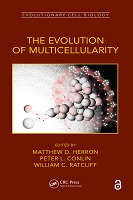Chapter 13 The Single-Celled Ancestors of Animals
Proposal review
A History of Hypotheses
Abstract
Among the most important innovations in the history of life is the transition from single-celled organisms to more complex, multicellular organisms. Multicellularity has evolved repeatedly across the tree of life, resulting in the evolution of new kinds of organisms that collectively constitute a significant portion of Earth’s biodiversity and have transformed the biosphere. This volume examines the origins and subsequent evolution of multicellularity, reviewing the types of multicellular groups that exist, their evolutionary relationships, the processes that led to their evolution, and the conceptual frameworks in which their evolution is understood. This important volume is intended to serve as a jumping-off point, stimulating further research by summarizing the topics that students and researchers of the evolution of multicellularity should be familiar with, and highlighting future research directions for the field.
Keywords
Animal Kingdom,Plasmodial Slime Molds,Polysphondylium Pallidum,Amoeboid Cells,Multiciliated Cells,Single Celled Ancestors,Fruiting Body Morphology,Cellular Slime Mold Dictyostelium Discoideum,Single Cell Techniques,Naegleria Gruberi,Cellular Slime Mold,Myxococcus Xanthus,Ventral Folds,Bryozoan Larva,Major Evolutionary Transitions,Amoeboid Migration,Motile Cilia,Unicellular Ancestors,Complex Life Histories,Physarum Polycephalum,Cell Theory,Flagellated Cells,Molecular PhylogeniesDOI
10.1201/9780429351907-17ISBN
9780367356965, 9781032207797, 9780429351907Publisher
Taylor & FrancisPublisher website
https://taylorandfrancis.com/Publication date and place
2022Grantor
Imprint
CRC PressClassification
Cellular biology (cytology)
Evolution
Molecular biology
Developmental biology
Biology, life sciences


 Download
Download